
Hercules is the Roman equivalent of the Greek divine hero Heracles, son of Jupiter and the mortal Alcmena. In classical mythology, Hercules is famous for his strength and for his numerous far-ranging adventures.
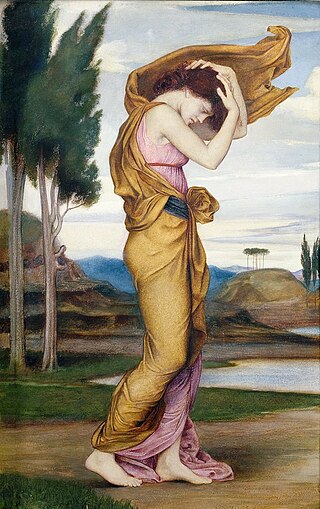
Deianira, Deïanira, or Deianeira, also known as Dejanira, is a Calydonian princess in Greek mythology whose name translates as "man-destroyer" or "destroyer of her husband". She was the wife of Heracles and, in late Classical accounts, his unwitting murderer, killing him with the poisoned Shirt of Nessus. She is the main character in Sophocles' play Women of Trachis.

In Greek mythology, Iole was the daughter of King Eurytus of Oechalia. According to the brief epitome in the Bibliotheca, Eurytus had a beautiful young daughter named Iole who was eligible for marriage. Iole was claimed by Heracles for a bride, but Eurytus refused her hand in marriage. Iole was indirectly the cause of Heracles' death because of his wife's jealousy of her.

In Greek mythology, Lichas was Heracles' servant, who brought the poisoned shirt from Deianira to Hercules because of Deianira's jealousy of Iole, which killed him.

Antonio del Pollaiuolo, also known as Antonio di Jacopo Pollaiuolo or Antonio Pollaiuolo, was an Italian Renaissance painter, sculptor, engraver, and goldsmith, who made important works in all these media, as well as designing works in others, for example vestments, metal embroidery being a medium he worked in at the start of his career.
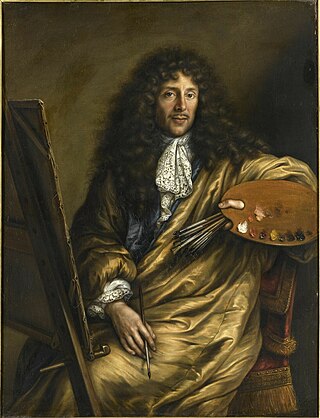
Noël Coypel was a French painter, and was also called Coypel le Poussin, because he was heavily influenced by Poussin.
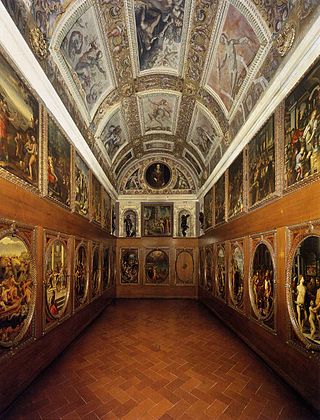
The Studiolo is a small painting-encrusted barrel-vaulted room in the Palazzo Vecchio, Florence, Italy. It was commissioned by Francesco I de' Medici, Grand Duke of Tuscany. It was completed for the duke from 1570 to 1572, by teams of artists under the supervision of Giorgio Vasari and the scholars Giovanni Batista Adriani and Vincenzo Borghini.
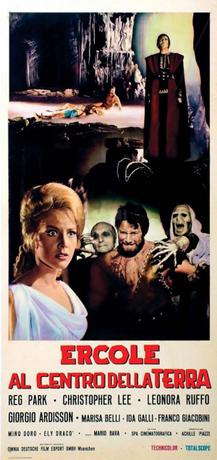
Hercules in the Haunted World is a 1961 Italian sword-and-sandal film directed by Mario Bava. British bodybuilder Reg Park plays Hercules while British actor Christopher Lee appears as Hercules' nemesis Lico. Shooting at Cinecittà, director Mario Bava used some of the same sets from the earlier Hercules and the Conquest of Atlantis which also stars Park.

The Nessos Painter, also known as Netos or Nettos Painter, was a pioneer of Attic black-figure vase painting. He is considered to be the first Athenian to adopt the Corinthian style who went on to develop his own style and introduced innovations. The Nessos Painter is often known to be one of the original painters of black-figure. He only worked in this style, which is shown on his name vase in the National Archaeological Museum in Athens. Most of the known Nessos Painter ceramics were found in funerary settings such as cemeteries and mortuaries.

The Loves of Hercules is a 1960 international co-production film starring Jayne Mansfield and her then husband Mickey Hargitay. The film was distributed internationally as Hercules vs. the Hydra.

Hercules in the Vale of Woe, a.k.a. Hercules in the Valley of Woe, is a 1961 Italian Franco and Ciccio comedy film directed by Mario Mattoli and starring Kirk Morris as Maciste and Frank Gordon as Hercules. The film is a comical take on the popular sword-and-sandal epics of the 1950s and 1960s.
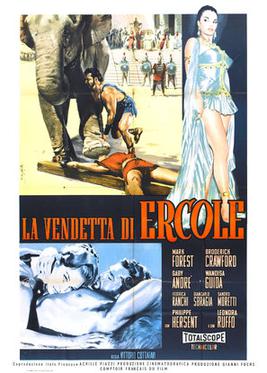
Goliath and the Dragon is a 1960 sword-and-sandal film directed by Vittorio Cottafavi and starring Mark Forest and Broderick Crawford.
Artemon, a Greek painter, who is recorded by Pliny to have painted a picture of Queen Stratonice, from which it is presumed that he lived about B.C. 300. He also painted 'Hercules and Deianira;' but his most celebrated works were the pictures which were carried to Rome, and placed in the Octavian Portico, representing 'Hercules received amongst the Gods;' and the 'History of Laomedon with Apollo and Neptune.'
Achelous and Hercules is a 1947 mural painting by Thomas Hart Benton. It depicts a bluejeans-wearing Hercules wrestling with the horns of a bull, a shape the protean river god Achelous was able to assume. The myth was one of the explanations offered by Greco-Roman mythology for the origin of the cornucopia, a symbol of agricultural abundance. Benton sets the scene during harvest time in the U.S. Midwest.
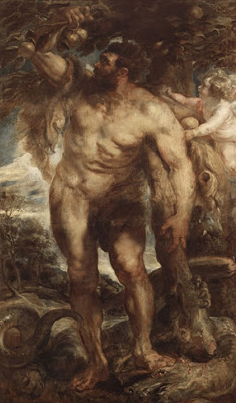
Hercules in the Garden of the Hesperides is a 1638 painting by Peter Paul Rubens. It measures 246 cm by 168.5 cm and is now in the Sabauda Gallery in Turin. It shows Hercules in the Garden of the Hesperides and forms part of a pair with the same artist's Deianira Listens to Fame.

Hercules Oetaeus is a fabula crepidata of c. 1996 lines of verse which survived as one of Lucius Annaeus Seneca's tragedies. It tells the story of Hercules' betrayal by his jealous wife, Deianira, followed by his death and apotheosis. The general opinion is that the play is not Seneca's, but was written in close imitation.

Hylas and the Nymphs is an 1896 oil painting by John William Waterhouse. The painting depicts a moment from the Greek and Roman legend of the tragic youth Hylas, based on accounts by Ovid and other ancient writers, in which the enraptured Hylas is abducted by Naiads while seeking drinking water.

Hercules Killing the Stymphalian Birds is a 1500 tempera on canvas painting by Albrecht Dürer, now kept in the Germanisches Nationalmuseum in Nuremberg.

Astarté is an opera in four acts and five scenes by Xavier Leroux to a libretto by Louis de Gramont. It was premiered at the Opéra de Paris on 15 February 1901, directed by Pedro Gailhard.

Hercules and Deianira is an oil painting by Antonio del Pollaiuolo, executed c. 1470, originally on panel but later transferred to canvas. It measures 54.6 cm by 79.2 cm, slightly larger than his other surviving mythological paintings, but still fairly small.


















